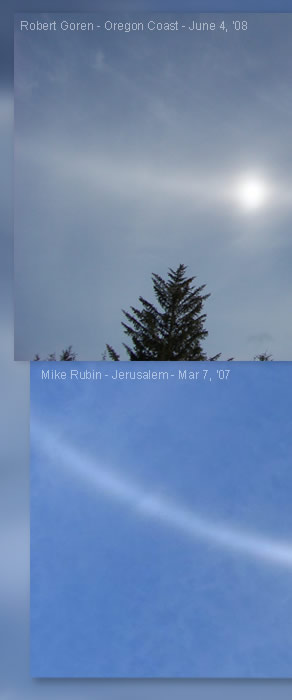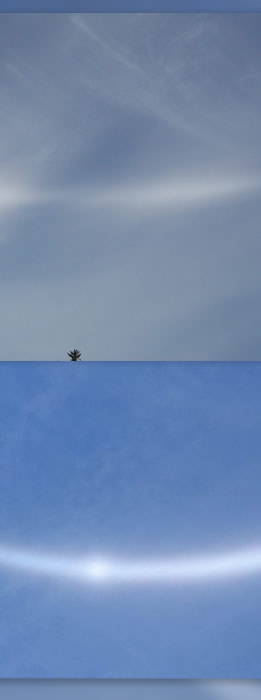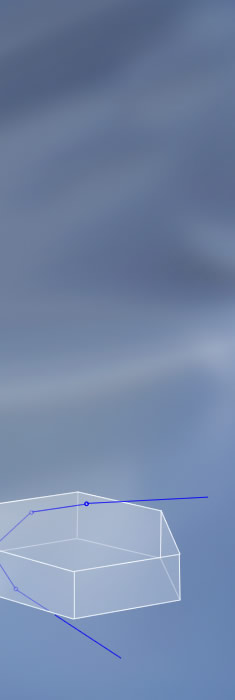120° Parhelia
Upper image by Robert Goren in Oregon
Lower seen by Mike Rubin in Jerusalem during the great March '07 halo display.
Colourful sundogs, 22° parhelia, a hand's span from the sun are familiar. Less so are the white patches much further along the parhelic circle. 120° parhelia can, as here, be extremely bright but very often they are overlooked because they have no colours to distinguish them from clouds.
They are formed by plate crystals. A ray can enter the top face, reflect internally from two side faces and finally leave through the lower face - path 1,3,8,2. The overall light deflection is always 120° regardless of the crystal orientation. The colour dispersions at ray entry and exit are in opposite directions and cancel to yield a white halo. The ray's route needs several optically perfect faces, freedom from internal defects and thick plates. Rare.
Are the 120° parhelia always lacking in colour? See the next OpticsPOD.
Images ©Robert Goren & Mike Rubin
|




